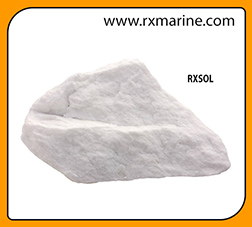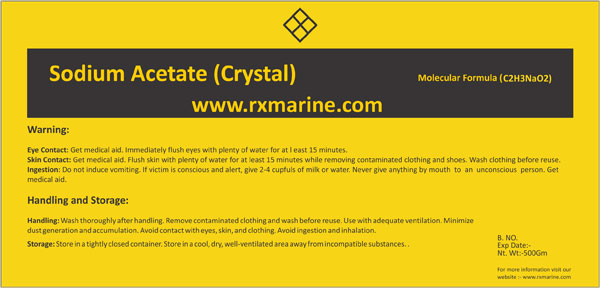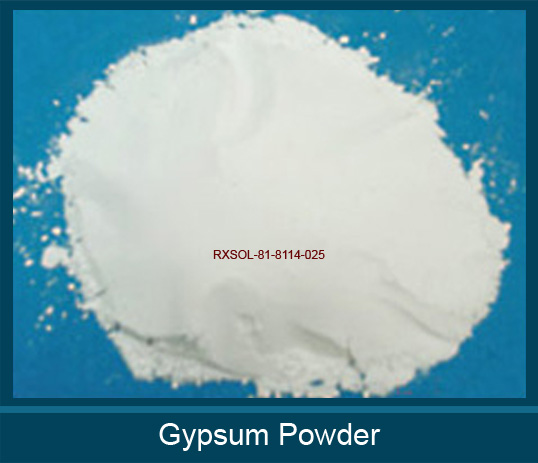Bentonite Powder
Bentonite API, Montmorrilonite
Bentonite premium quality products exporter from India to Middle East - Dubai.
Difference Between Sodium Bentonite and Calcium Bentonite :
Bentonite is naturally occurring hydrated Alumina Silicate, there are two main varieties, calcium and sodium, where sodium Bentonite is the more commercially important. Calcium Bentonite deposits are much more common than sodium Bentonite deposits. However, calcium Bentonite can be changed to sodium Bentonite by the ion exchange process. The swelling type or sodium Bentonite, which has single water layer particles containing Na+ as the exchangeable ion. The other has double water layer particles with Ca++ as the exchangeable ion. It is called calcium Bentonite or non-swelling type.The clay-water characteristics are of primary importance. The chemical composition of the Bentonite is a consideration only because changes in physical properties accompany changes in chemical composition. Sodium Bentonite swells or expands to a greater degree than its calcium equivalent. Small percentage of cation exchange sites are occupied by another ion, such as calcium, a state is developed in the clay which promotes both optimum swelling and fastest hydration. Sodium Bentonite has higher swelling capacity, this property develops higher viscosity in suspensions, greater state of disaggregation, formation of smaller clay particles or greater colloidal properties.
| Composition of Bentonite |
Percentage value |
| Part Number |
RXSOL-81-8101-050 |
| SiO2 | 70,A2% |
| Ai2O3 | 15.9,A1.5% |
| Fe2O3 | 2.3,A0.1% |
| FeO | 0.95,A0.1% |
| CaO | 0.96, A0.1% |
| MgO | 1.91, A0.1% |
| NaO | 1.80, A0.1% |
| TiO2 | 0.04, A0.01% |
| K2O | 0.78, A0.01% |
| Caustic Soda | 0.55, A0.1% |
|
Physical State |
:Free Flowing Powder |
|
Viscometer Dial reading at 600 r/min |
: Min 30 |
|
Yield Point/Plastic Viscosity Ratio |
: Max 3 |
|
Residue of diameter greater than 75um |
: Max mass friction 4,0% |
|
Filtrate Volume |
: Max 15.0 Cm3 |
|
Moisture |
: 10% wt percent max |
Various grade of Bentonite :::
Drilling Grade 1
API 13A Section – 9 Grade Bentonite Powder:
Physical Analysis:
|
PROPERTIES |
PROTOCOL |
UNIT |
REQUIRED |
RESULT |
|
Viscometer Dial Reading at 600 rpm |
API Spec. 13A:2004/ ISO 13500: 1998 |
r/min |
30 |
36 |
|
Yield Point / Plastic Viscosity Ratio |
API Spec. 13A:2004/ ISO 13500: 1998 |
_ |
3 Max |
2.5 |
|
Filterate Volume |
API Spec. 13A:2004/ ISO 13500: 1998 |
ML |
15 Max |
14.6 |
|
Moisture Content |
API Spec. 13A:2004/ ISO 13500: 1998 |
% by weight |
10.0 max. |
10 |
|
Dry Screen Analysis(Residue Greater than 75 Microns)% |
API Spec. 13A:2004/ ISO 13500: 1998 |
% by weight |
4.0 max. |
3.0 - 4.0 |
IOP Grade Bentonite lumps :
|
Properties |
Protocol |
Unit |
REQUIRED |
|
Moisture Content |
API Spec. 13A:2004/ ISO 13500: 1998 |
% by wt. |
12% to 40 % max. |
|
LOI |
IS:2000(P-1)-1985 |
% by wt. |
5 – 10. |
|
Free Swelling Volume 2gm/100ml |
ASTM D 5890:1995 |
ml |
32 min. |
|
PH Value of 5% gel |
IS:6186-1986 |
pH |
8.0 – 10.0 |
|
Plate Water Absorption (16 hours) |
ASTM E 946 |
% |
720- 760 |
|
Gel Time 2.5gm/25 ml |
IS:12446-1988 |
second |
Instant |
|
Methylene Blue Value |
API spe 131:2004/ ISO 10416:2002 |
mg/gm of clay |
350 - 400 |
|
Lumps size |
IS:6186-1986 |
% |
10 to 40 m.m. |
Chemical specification:
Alumina as AL2O3%>15.0-19.0
Calcium as Cao%1.5-2.0
Mgo 2.5-3.5






























